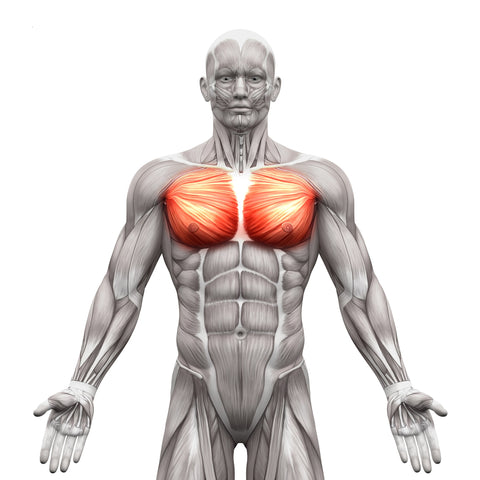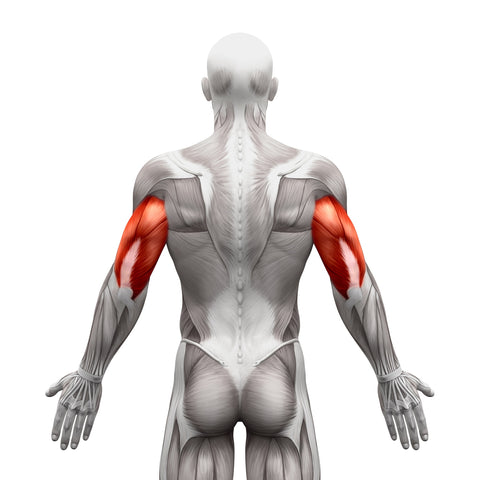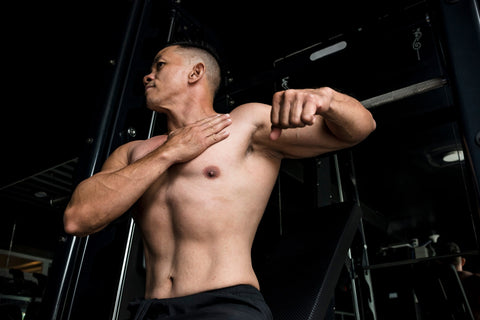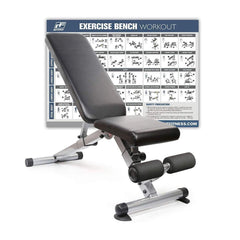All Pain, No Gain? You May Bench Press the Wrong Way!
How do I know if I bench press the wrong way?
Imagine this. It is a typical day. You go to the gym. Well, good luck to you. The workout bench has not been taken yet. You lie on the bench and start your weight bench exercises. You try to lift heavier to gain more chest muscles since we all know that strength is size. You keep feeling shoulder pain, but that’s fine. You say to yourself, no pain, no gain.

Shoulder Pain
One month later, there’s only pain, not a bit gain. All this time and energy are in vain. Then you look back on everything you’ve done and ask yourself: did I do something wrong? Well, yes. If you feel the painful, burning sensation in your shoulder during or after the workout, you’re very likely to bench press in the wrong way.
RitFit is committed to presenting our customers best products and professional fitness knowledge to improve their workout experience. Here, we’ll unveil a couple of things about weight bench workouts that you should know:
- What muscles does bench press work?
- How do common bench press injuries come?
- How to properly bench press?
The bench press is regarded as one of the most effective ways of gaining upper-body strength, primarily the chest muscles and triceps, and significantly improving posture and physique. However, performing it in the wrong way can lead to shoulder pain and serious injuries that take weeks or even months to heal.
What Muscles Does Bench Press Work?
The answer to that question can help you gain muscles effectively through barbell bench pressing. In general, the muscles worked during bench pressing are the chest, shoulders, and triceps.
1. Chest Muscles
The main chest muscle is the pectoralis major. It includes the upper pec (clavicular head) and the lower pec (sterna head). The upper pec helps with shoulder flexion, while the lower pec assists in moving the arms straight overhead from the front.

Chest Muscles
2. Shoulder Muscles
The shoulder consists of the anterior deltoid (front), medial deltoid (side), and rear deltoid (back). Only the anterior deltoid works in the bench press as a prime mover. Like the lower pec, it helps move the arms overhead from the front.

Shoulder Muscles
3. Tricep Muscles
The triceps include three parts: the medial, lateral, and long head. Only the lateral and medial heads are involved in the bench press, which helps extend the elbow.Knowing what muscles bench press works helps to understand the pain and injuries you feel while bench pressing.

Tricep Muscles
How do Common Bench Press Injuries Come?
Performing the barbell bench press wrong can lead to pain and injuries, with the rotator cuff injury being the leading one.
1. Rotator Cuff Injury
The rotator cuff refers to a group of four muscles (subscapularis, infraspinatus, teres minor, and supraspinatus) and their tendons that stabilize your shoulder joint, enabling you to lift and rotate your arms. Rotator cuff injuries are often caused by overloading weights during bench pressing.
The rotator cuff tendons are super susceptible to the compressive forces of subacromial impingement. Hence, improper bench press technique and poor posture can lead to a progressive injury from acute inflammation to a tendon tear.

Rotator Cuff Injury
2. Pectoralis major tendon injury
Studies found that the pectoralis major tendon injury is alarmingly frequent during weight lifting, which often results from losing control of weight during the motion. According to the study, it takes 6 months for the patient to resume full activity.
To avoid such injury, weightlifters should lift lighter weights with more repetitions. It is pointless to show off how much you can bench if you end up with all pain, no gain.

Pectoralis Major Tendon Injury
How to properly bench press?
The bench press looks easy to perform, for the only thing you need to do is to lie on the workout bench and lift the bar up and down, yet many have trouble benching with proper form. Here present some tips to bench properly.
1. Warm-up before bench pressing
Ab workout warm up is vital before lifting the bar. Warm-up through a combination of stretching and cardio ensures your muscles are warmed up before bench pressing. You can stretch your arms, especially the muscles you’re about to train, particularly the rotator cuff muscles, the shoulders, and the triceps. It can strengthen your flexibility and prepare your body for a good workout.

Warm Up Before Bench Pressing
2. Avoid common mistakes while bench pressing
Here are some common mistakes that get in the way of building muscles. If you find you have been making some of these mistakes, it's not too late to correct them.
Mistake 1: Hips off the bench or press with a flat back
During the movement, you should make sure your head, shoulders, and hip are firmly and evenly placed on the workout bench. If you raise your hips off the bench, you’re putting extra strain on your lower back during the movement, which shortens your range of motion and is likely to cause injury.
Meanwhile, you also need to leave some space between your back and the bench. To put it simply, you need to arch your back to work your upper-back muscles and keep stability. That way, your shoulder stays externally rotated throughout the movement, keeping it safe from the dangerous internally rotated position.
Mistake 2: Straight up and down
During the bench pressing, the movement of the bar should be a curved motion rather than a straight “up and down” motion. You should lift the bar diagonally back to the starting point to prevent potential injury.
Mistake 3: Bouncing the bar off your chest
Bouncing the bar off your chest to help get it back is very dangerous and can easily cause injury. Always remember to lift the bar within your weight range. Make sure you’re able to control the movement to fully work your chest.
Mistake 4: Keep your shoulders forward
If you keep your shoulders forward during bench pressing, you’re not building the chest muscles but the shoulders. To form a well-built chest, you need to keep your shoulders down and squeeze the shoulder blades together, meanwhile contracting the upper back muscle to support the shoulders, thus preventing injury and working your chest muscles effectively.
To warm up your body pre-workout and avoid the common mistakes above, you can now enjoy your pain-free bench press! As dangerous as the bench press can be sometimes, you would better perform this with a spotter or a power rack. That way, even if you fail to lift the bar, the spotter and power rack can help get the barbell off your body quickly to ensure your safety.
Final Words
RitFit foldable weight bench is your ideal partner to perform the weight bench workouts. It saves you the hustle and bustle of going to the local gym and waiting for the bench to be available. Bench press the right way, and your hard work will pay off with great pecs.

















